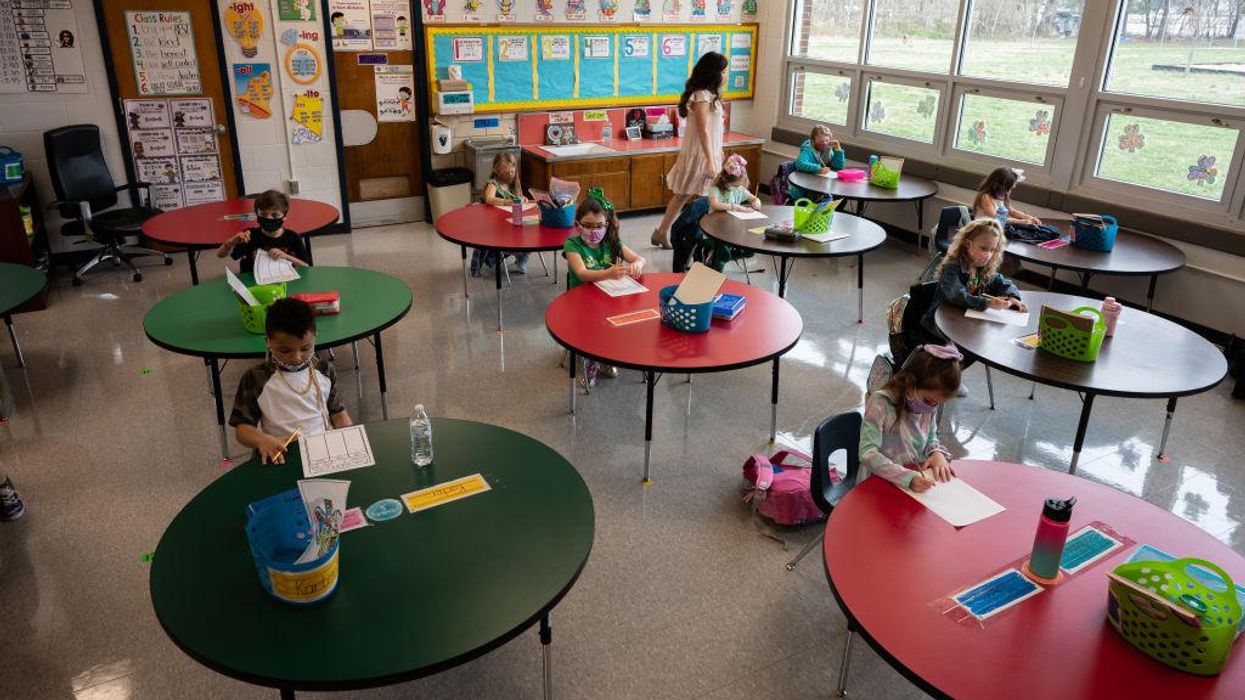
Jon Cherry/Getty Images

The change should make in-person instruction easier
The argument to fully reopen schools for in-person learning was strengthened Friday by new Centers for Disease Control and Prevention guidelines that clarify it is safe for schoolchildren to sit just three feet apart in the classroom, provided they wear masks. However, the CDC still recommends six-foot social distancing at sporting events, assemblies, lunch, and choir practice, and of course for adults.
The revised recommendations come following a new study that suggested three feet of social distancing is just as safe as six feet if everyone wears a mask. Under the old six-foot recommendation, space in classrooms for in-person instruction was limited, requiring some schools that chose to open to create staggering class schedules or other means of keeping children apart.
More from the Associated Press:
Three feet "gives school districts greater flexibility to have more students in for a prolonged period of time," said Kevin Quinn, director of maintenance and facilities at Mundelein High School in suburban Chicago.
In recent months, schools in some states have been disregarding the CDC guidelines, using 3 feet as their standard. Studies of what happened in some of them helped sway the agency, said Greta Massetti, who leads the CDC's community interventions task force.
"We don't really have the evidence that 6 feet is required in order to maintain low spread," she said. Also, younger children are less likely to get seriously ill from the coronavirus and don't seem to spread it as much as adults do, and "that allows us that confidence that that 3 feet of physical distance is safe."
CDC Director Dr. Rochelle Walensky said the revised recommendations are a "roadmap to help schools reopen safely, and remain open, for in-person instruction." She said in-person schooling gives students not only "the education they need to succeed" but access to crucial social and mental health services.
The changes include:
The new guidelines were met with skepticism from Randi Weingarten, president of the American Federation of Teachers, who told the AP that her 1.6 million-member union would review the science but is concerned the CDC's change "has been driven by a lack of physical space rather than the hard science on aerosol exposure and transmission."